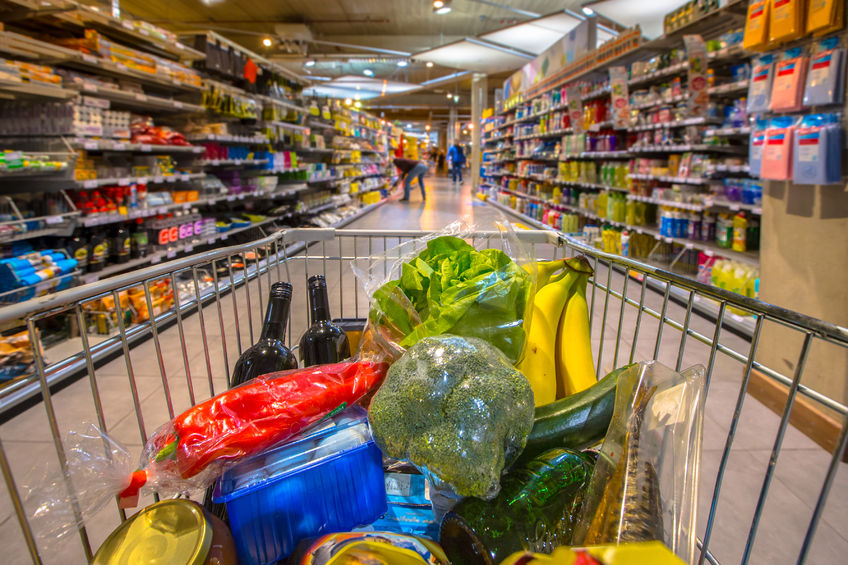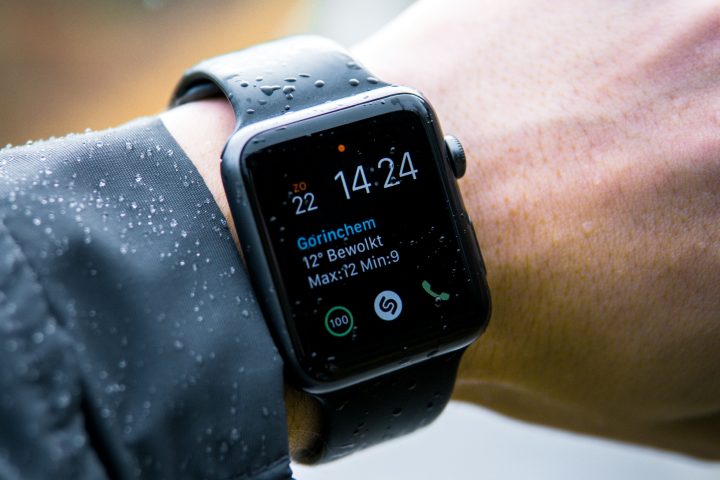Grocery stores are a staple in any town – a traditional operation that most folks rely on for food and household items, whether a quick midweek pick-up or mega haul for the whole family. But the times, they are changing.
Introduction
Today’s world is one of fierce competition and wealth. Competition in the grocery business is no exception. The competitive nature of the industry has led to price wars and buyouts, as well as the standard big box store model. And there are a number of factors in play with such issues.
The Automated Vending Machine (“Machine”) is one of the most common implementation methods used in grocery stores to rapidly clear out product. The first generation of this technology was fairly limited, and consisted of small and portable models that plugged into a wall outlet.
Coordinated from the comfort of a computer, the human shelf-worker is replaced by an algorithmic system that runs the stock and adds products like item “A” in order to maximize profits.
Every grocery store that has created a machine has rewritten its business model in order to create the right infrastructure to support this change. The successful stores have tapped into the analytical capabilities of their machines and implemented systems to draw such information out, and to adapt the business model to the advantages found in the data.
What are the prospects for a new era of big box grocery in the future?
Grocery stores have identified that they need to embrace technology and data if they are to survive in the future. And data is not just something that relies on inventory management, as the traditional industry focus has been. Data is now a key driver for success in the grocery industry.
Data is now a key driver for success in the grocery industry.
This is an important consideration for all grocery stores, small and large, as they must compete with the big box stores, which have created superstores that combine just about everything in a single location. Big box stores can manipulate data in order to predict and even dictate the demand for different products, either by over-stocking or simply ordering in bulk (i.e., “stuff may be available, but it is not necessary”).
But the new era for grocery stores is actually focused on utilizing the analytical skills of the store’s management software and data in order to tap into an untapped revenue stream – cold creameries.
The Big Boys (the big box stores) are fighting for market share in the current economic climate, and the grocery industry has rewritten its business model to accommodate this. The new industry focus now relies on cold creameries to supplement the revenue with socially responsible shopping, and learn from the data to improve their business.
Lack of data from all the new online shopping has created a new paradigm of restaurant-style ordering for hot and cold products, as grocery industry insiders are now calling it. But the real question, as one step further, is how cold creameries in grocery stores can be brought to the “big box” stores in new ways.
This is not the same as retort cold creameries for the supply of the grocery store, but rather hot creameries with cold creameries in the fridge, to double the amount of cold creameries in the store.
Chilled creameries, as they are called by industry insiders, is how big box stores are going to compete with their smaller cousins and create a better chain model.
Why Use Chilled Creameries?
Compared to supermarkets, groceries offer less selection. Customers in such a setting tend to shop for a single type of product or brand name. However, the supermarkets are creating a new demand for “first time” buyers as they offer the same product with a higher price point, and make it more convenient for the customer to jump into the sleek and fast lane of the automatic checkout, and out into the aisles to complete the purchase.
Grocery stores are also having to compete with renewed demand for organic products. As more and more supermarkets and big box stores are forced to accept the “scarce” and “organic” demand, grocery stores will have to ramp up and offer a wider selection of organic, in order to stem the tide of their competitors. And more and more of these products are being sourced by the large suppliers, and not through the grocery store channels.
Chilled Creameries – The Future of Grocery Stores
Grocery stores today have many different store models providing a model for groceries, and the consumer needs and wants are numerous. The traditional grocery store model focuses on the regular customer, buying paper or plastic bags every visit, and picking up milk in plastic bottles, in line with the close proximity to the faucet.
The big box stores also focus on this model, but they also take this a step further. Some stores will have a fully stocked aisle of beverages, with a mixture of different brands and sizes in one line. And they may even provide many different sizes for the same product (i.e., “2 liter”), and have the ability to pull product from the shelf for different size offerings (“100 milliliter”).
What is needed to compete with such a model is convenience, and one way for grocery stores to create this is with the chilled creameries.
The big box stores also take this a step further. Some stores will have a fully stocked aisle of beverages, with a mixture of different brands and sizes in one line. And they may even provide many different sizes for the same product (i.e., “2 liter”), and have the ability to pull product from the shelf for different size offerings (“100 milliliter”).
Chiller machines have also been implemented in South America, as the production of chilled food is beginning to be popular in many areas. Chilled food can also benefit restaurants and movie theatres in such a way as well, due to the ability to move deli wraps, ice cream, and more from a freezer to a shallow tub and thaw quickly. And with the introduction of chilled creameries, there is a new ‘economy of scale’ that no grocery store can compete with, from the delivery of a wider variety of cold products.
Small stores with limited resources have the ability to sell the same products in greater variety, and can make the “freezer cases” look impressive, with a wide variety of products, a greater assortment of sizes, and the ability to offer greater convenience.
From a marketing perspective, the chilled creameries is a way for small grocery stores to compete with the lowered prices of the big box stores. The chilled creameries will also have the ability to build loyalty with a specialty product, and provide the customer with a shopping experience that the highest-end, just-in-time refrigeration is not capable of.
This is the same bellwether that the big box carries are facing with the introduction of the self-scan checkout. The customers are willing to pay the extra cost to have to pay for the delivery of their own product, and to have to come to the front of the line.
So many customers have complained that the distance of the self-scan checkout registers is too far away from them to require them to walk a distance to complete their transaction. Well, one new way to put the customer front and center is to make the chilled creameries available for the customers to use.
There is also a great deal of interest in the ability to try different products to provide a new and “interesting” way of buying and discover new products. The “cold creameries” allow the product to be delivered while the groceries are still in their original bags, or the customer can place the fresh product in a tray to inspect on the spot.
And don’t hold out any hope for the combination food/condiments stations. Wholesale supermarkets will not have a chance to compete with the new aspect of the chilled creameries, and they must also be on top of the trends to be relevant with the customer.
Why People Are Emulating Whole Foods
The success of Whole Foods, and the rise of the natural and organic brands, has created a new demand for natural and organic food in a culture that seeks these products.
Wholesale groceries also must provide more service for the customers than the “Big Box stores”, who must provide little to no help to customers. The bigger stores are focused on the bigger, faster sale for the needs of the customers they can attract, and some locations are speaking of being able to move 1,000 sodas and candy bars an hour at the self-scan checkout, with the size of the line and the speed of the product delivery to be a significant revenue generator.
The smaller fold needs to provide the same service as the larger stores, but in a limited area, and they can utilize the chilled creameries to provide a larger assortment of products. The smaller store will also need to provide more-customized help for the customer, and having different stations for the different needs of the customer will be key.
A new revenue stream to support the smaller store is certainly an opportunity for the smaller grocery store, and the “cold creameries” will be a much-needed revenue generator as well, for organizations looking to have a niche product, or a line that needs to be fresher than the average store.
The “Chilled Creameries” are one of the newest trends in the grocery industry to help them compete for customers, and this can benefit the customer as well. The smaller store will provide a more personal shopping experience with the chilled creameries, and also provide more customer service with the help stations.
It is time for the “convenience stores” to move into the space that has not been profitable to them, to provide the right combination of service and products, and an enjoyable customer experience for the customer.
The Chilled Creameries will continue to evolve.
As the trend begins to focus on the new “convenience stores” with the regular customer as their target, the smaller grocery stores are defining the opportunity as a way to compete with the lower prices of the “big box stores”. These smaller stores are providing more service with the “stations”, and creating a more personal shopping experience that the small stores are not capable of providing. And the smaller store is providing the typical “convenience stores” with the freshness that the larger stores do not have, and can compete with the “Big box stores” at offering a wider variety of products.
The “Cold Creameries” are beginning to be a source of revenue for smaller grocers, and will be invaluable to those who are looking to cash in on the changing trend of the grocery industry.
The “cold creameries” will continue to evolve with the trends within the industry, and create the same processing centers that the larger grocery stores now provide to store all of the frozen and refrigerated products in one location, and be able to consolidate the orders and stores for the isolated departments.
The new “convenience stores” will require the grocers to provide more service, as they need to keep up the customer interest to continue to receive the revenue stream needed to be competitive with the larger stores.
On another note, the grocery industry must also ensure that the distribution models are made available to provide the correct products to the customers, especially when they want to create a particular flavor of the product, or the customers want a variety of delicious products.















